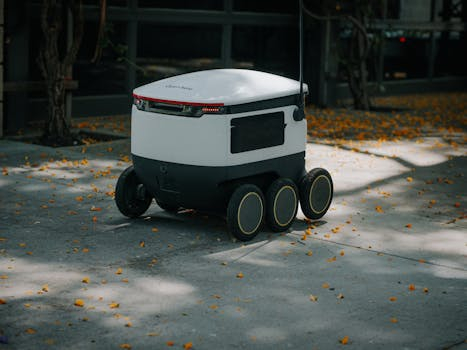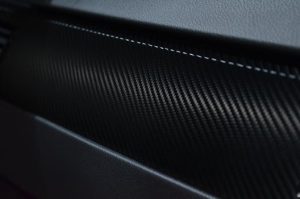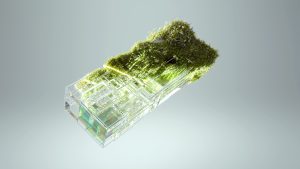Advanced Sensor Arrays: Next-Gen Lidar and Radar for Self-Driving.
Welcome to the future of self-driving cars. With advanced sensor arrays such as lidar and radar, we are taking autonomous vehicles to the next level. These innovative technologies are revolutionizing the way cars navigate and perceive their environment, making the roads safer for everyone. In this article, we will explore the world of advanced sensor arrays, their capabilities, and how they are shaping the future of self-driving cars.
Understanding Sensor Arrays
Before we dive into the specifics of advanced sensor arrays, let’s briefly understand what they are and how they work. Sensor arrays are collections of multiple sensors that work together to gather data from the environment. These sensors can be of different types, such as cameras, radars, lidars, and ultrasonic sensors. By combining the data gathered by each sensor, sensor arrays provide a more comprehensive view of the surrounding environment, allowing self-driving cars to make better decisions.
Lidar – The Eyes of Self-Driving Cars
What is Lidar?
Lidar, short for light detection and ranging, is a remote sensing technology that uses laser pulses to measure distances and create detailed 3D maps of the surrounding environment. It works by emitting rapid pulses of laser light and then measuring the time it takes for the light to bounce back after hitting an object. By repeating this process millions of times per second, lidar sensors create a high-resolution 3D map of the car’s surroundings.
Advanced Features of Lidar
Traditional lidar sensors could only detect objects at certain distances and angles, limiting their effectiveness in complex environments. However, with advancements in technology, lidar sensors now come with advanced features such as multi-beam and 360-degree scanning capabilities. These features allow lidar sensors to detect objects at longer distances and provide a more comprehensive view of the environment in real-time. Additionally, some lidar sensors use rotating mirrors instead of a single laser beam, further enhancing their effectiveness.
Benefits of Lidar for Self-Driving Cars
The main benefit of using lidar in self-driving cars is its ability to create highly detailed 3D maps of the surrounding environment in real-time. This data is crucial for self-driving cars to accurately and safely navigate through complex environments. Lidar is also less affected by external factors such as lighting conditions and can detect objects that are not visible to the human eye, such as low-lying obstacles. These features make lidar a crucial component in the development of self-driving cars.
Radar – The Ears of Self-Driving Cars
What is Radar?
Radar, short for radio detection and ranging, is a sensing technology that uses radio waves to detect the position and velocity of objects in its range. Radar sensors work similarly to lidar, but instead of using laser pulses, they use radio waves to measure the distance between the sensor and objects in the environment. These sensors work by transmitting radio signals, which bounce off objects in the environment and return to the sensor. By analyzing the properties of the returning signals, radar sensors can determine the position, size, and speed of objects.
Advanced Features of Radar
Traditional radar sensors were limited in their abilities and could only detect objects at short distances. However, recent advancements in radar technology have led to the development of long-range and high-resolution radar sensors. These sensors can detect objects at longer distances and provide detailed information on the object’s speed and direction of movement. They also come with features such as digital beamforming, which allows the sensors to focus on a specific area, improving their accuracy.
Benefits of Radar for Self-Driving Cars
Radar sensors play a crucial role in self-driving cars, particularly in environments with poor visibility. They work well in adverse weather conditions, low light, and can also detect objects through objects such as fog, dust, and smoke. This makes them essential for autonomous vehicles that need to operate in all types of weather and environmental conditions. Their ability to detect objects at long distances also gives self-driving cars more time to react and make decisions, ensuring the safety of passengers and other road users.
Integration of Lidar and Radar in Self-Driving Cars
While lidar and radar sensors have their individual strengths, they are even more powerful when used together in a sensor array. By combining the data from lidar and radar sensors, self-driving cars can create a more complete and accurate understanding of their surroundings. Lidar can provide a detailed 3D map of the environment, while radar can detect objects at longer distances, providing the car with a complete picture of its surroundings. This integration of sensors is crucial for the development of fully autonomous vehicles.
Implications for the Future
Advanced sensor arrays, such as lidar and radar, are paving the way for the future of self-driving cars. With the ability to create detailed 3D maps of the environment and detect objects at longer distances, these sensors are making autonomous vehicles more reliable and safer. As technology continues to evolve, we can expect to see further advancements in sensor arrays, making self-driving cars a common sight on our roads.
Conclusion
In conclusion, advanced sensor arrays, such as lidar and radar, are crucial for the development of self-driving cars. With their ability to gather and analyze data from the surrounding environment, these sensors are helping to create safer and more reliable autonomous vehicles. As technology continues to advance, we can expect to see more innovative sensor arrays, further accelerating the development of self-driving cars. The future of transportation is undoubtedly exciting, and advanced sensor arrays will play a vital role in making it a reality.








